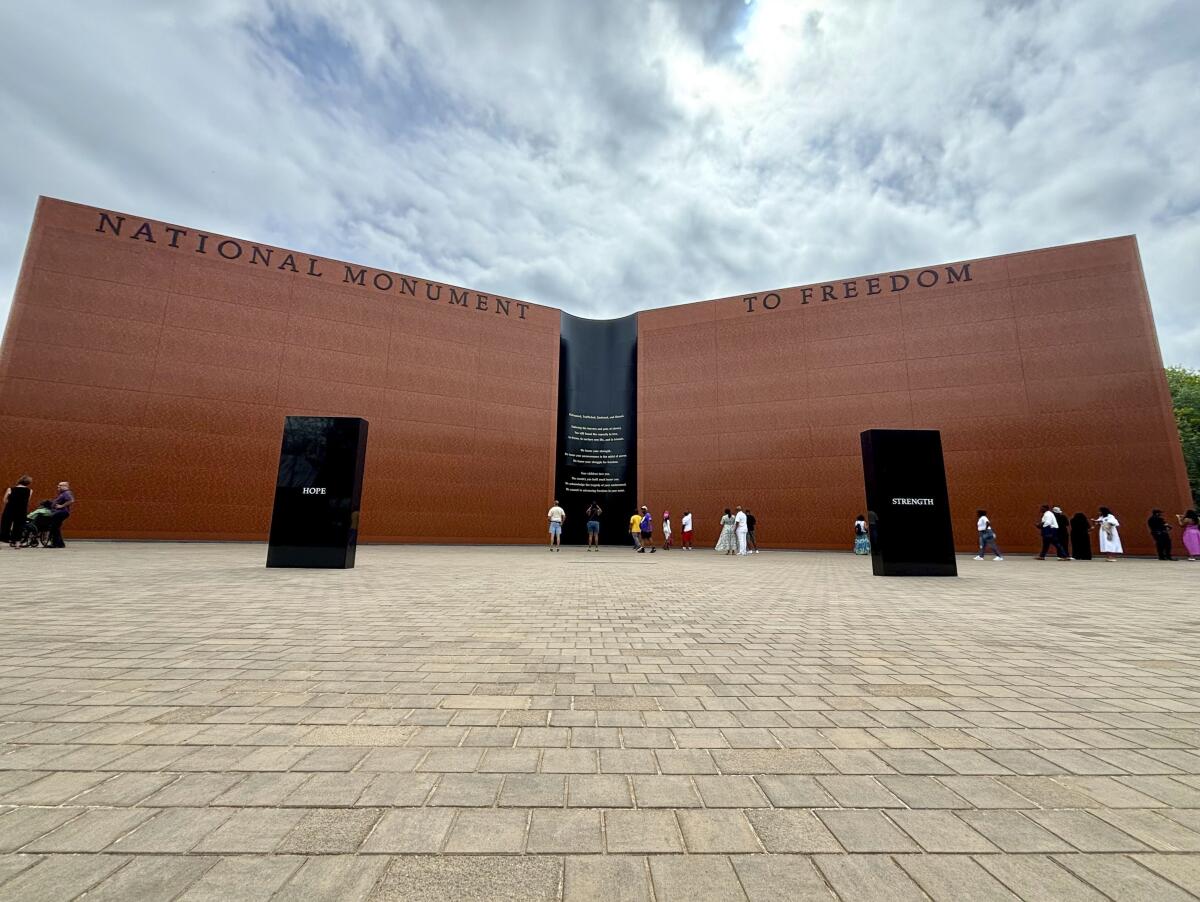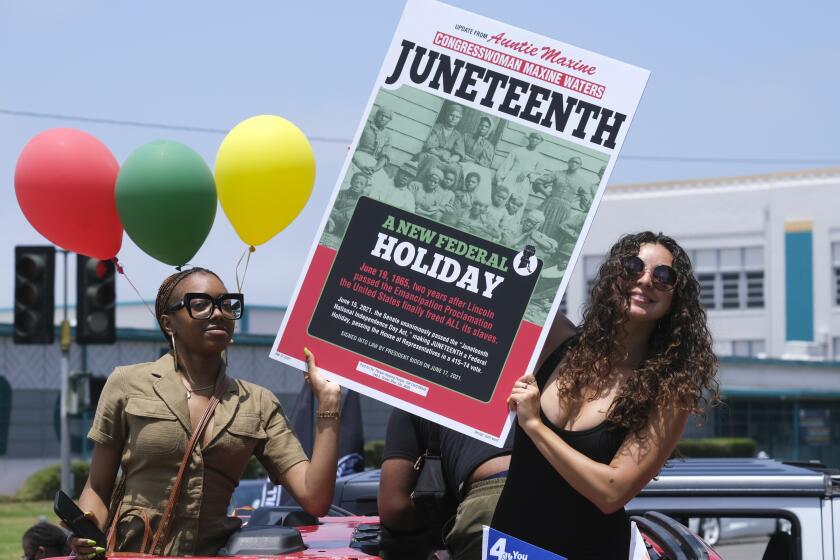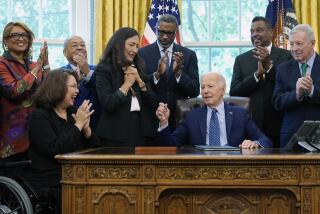On Juneteenth, monument dedicated in Alabama to those who endured slavery

- Share via
MONTGOMERY, Ala. — Thousands of surnames grace the towering monument, representing the more than 4 million enslaved people who were freed after the Civil War.
The Equal Justice Initiative, a criminal justice reform nonprofit, invoked the Juneteenth holiday — the day that commemorates the end of slavery in the U.S. — on Wednesday as it dedicated its National Monument to Freedom.
The monument, which honors the people who endured and survived slavery, is the centerpiece of the new Freedom Monument Sculpture Park in Montgomery, Ala., where art and historical artifacts tell the story of enslaved people in the United States.
During the dedication ceremony, Equal Justice Initiative founder Bryan Stevenson recounted how enslaved people endured unspeakable horrors, but also left a legacy of perseverance and strength.
What is Juneteenth and who helped make it a federal holiday? When did the last enslaved people in the United States learn they were free?
“Enslaved people in this country did something remarkable that we need to acknowledge, that we need to recognize and that we need to celebrate. Enslaved people resisted. Enslaved people were resilient. Enslaved people found ways to make a way,” Stevenson said.
Juneteenth is a day to confront the brutality of slavery and its impact, but he said it is also a day to celebrate the dignity and strength of people who managed to love and survive despite what they faced.
“They never stopped believing. The never stopped yearning for freedom. This morning, as we leave here this Juneteenth morning, I hope we will be hopeful,” Stevenson said.
Juneteenth commemorates June 19, 1865, the day enslaved people in Galveston, Texas, found out they were free after the Civil War. The news came two months after the end of the Civil War and about 2 1/2 years after the Emancipation Proclamation.
At a time when the GOP is trying to erase Black history, Jefferson Boulevard now highlights a history that has long shaped this city and its people.
Stretching four stories into the sky, the National Monument to Freedom is inscribed with 122,000 surnames that formerly enslaved people chose for themselves, as documented in the 1870 Census, after being emancipated at the Civil War’s end. Those last names represent the more than 4 million enslaved people who were set free after emancipation.
The Equal Justice Initiative created the park to tell the story of enslaved people with honesty. The sculpture park is the third site created by the organization. The first two sites — the National Memorial for Peace and Justice, a memorial to people slain in racial terror killings; and The Legacy Museum: From Enslavement to Mass Incarceration — opened in 2018.
Dr. Michele R. Williams and her mother, Barbara Y. Williams, scanned the rows of names on Wednesday morning, looking for their family surname, Murdough.
“There’s a story connected to every single name and the families that they represent,” Michele Williams said. Their ancestor, a man named Moses, is believed to have lived in one of the two slave cabins that were taken from an Alabama plantation to become an exhibit at the sculpture park.
“It was just heart-wrenching, but also super moving,” Michele Williams said of seeing the cabin.
More to Read
Sign up for Essential California
The most important California stories and recommendations in your inbox every morning.
You may occasionally receive promotional content from the Los Angeles Times.












